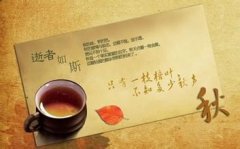A brief introduction to the description of balanced taste and aroma characteristics of Bolivian coffee

Takesi Manor, the treatment of drinking water and coffee after harvest, uses ice-cold mountains and rivers that melt high mountains, so we give her a nickname: Takesi Snow vein Manor. In addition to a low-temperature, pollution-free environment, fertile and well-drained volcanic soil is also an element of coffee flavor. Although the owner of Agrotakesi SA is rich, he secretly respects nature and the way of getting along with each other, does not over-cultivate, and retains a large number of primitive forests and diverse ecological environment. It is famous for its crops such as apples, orchids and flowers, and now it has won the first prize in the coffee contest, and Takesi's reputation has become even more popular.
I remember that the admirable champion bean in 2007 was Coffee Manor, but her score was overtaken by the 2008 champion Cafe de Cordillera, when the international judges gave it a high score of 92.03. in 2009, Takesi Snow vein Manor got a score of 93.36, surpassing the champion of 2008, and the bidding price was as high as US $35.05. it was the highest bid in CoE national competition in 2009! Osher has been bidding for Bolivia's champion beans for three years in a row. She is really attracted by her delicate floral fragrance, charming sweet vanilla and clean and changeable flavor. In 2010, many factors, Bolivia decided to cancel the national competition, examine this batch of Takesi winning beans, it is mixed feelings, hard-won ah.
Bolivia's high-quality estates, very high altitude, perennial low temperature environment, so that coffee fruit growth is slow, tight enough, aroma is also charming, floral aroma is obvious, such as careful handling, cherries with the same maturity, often have a clean and meticulous high-end taste, this elegant vanilla and honey aromas are very attractive, this champion bean has a variety of floral aromas, vanilla and sweet very long-lasting.
The following is the certificate of this batch of champion beans and the green and beautiful appearance of raw beans:
The goal of planting coffee in the whole Takesi manor is 200ha, but only 13ha is planted and harvested very little Typica species, and the annual yield is only 120bags. This is not only fine agriculture, but also a farming model that respects nature. Takesi is the name of the local natives, the place name and the snow water from the mountains, also known as Takesi. After the publication of the CoE final in 2009, Takesi is no longer unknown.
Bolivia not only has a unique growing environment, but also has an excellent variety of coffee-Typica. In the past two hundred years, the main variety of coffee in Yanggas area is the ancient Tibica. Tibica coffee has a balanced and soft flavor, with lively aroma and rich sour taste. Unfortunately, the low production of Tibika and poor disease resistance have led to low coffee production in Bolivia. There are even fewer opportunities to taste Bolivian coffee. So in order to increase coffee production, Bolivia, like other Central American countries, began to experiment with growing Kaddura and Catuai. Kaddura variety has high yield, high quality, rich sour taste and resistance to leaf rust. Kaduai variety has high yield, strong environmental adaptability and tolerance to diseases and insect pests. Planting these two varieties is expected to increase the yield as much as possible while ensuring the flavor quality.
The overall taste of Bolivian coffee is rich and balanced, the aroma is rich and unique, similar to the mixture of flower and fruit aroma, impressive. The perennial low temperature environment makes the coffee fruit grow slowly, compact enough, the aroma is also charming, the floral aroma is obviously medium and low acidity, but the feeling is not monotonous, on the contrary, it appears soft and fresh, with the sour taste of citrus fruit.
Because Bolivia's production is low, we don't have many chances to drink it. It is precisely because the smaller the output, the more precious it is. Because of my personal preference for Central American coffee, I still have more expectations for Bolivia, a small and beautiful coffee producer.
I remember that the admirable champion bean in 2007 was Coffee Manor, but her score was overtaken by the 2008 champion Cafe de Cordillera, when the international judges gave it a high score of 92.03. in 2009, Takesi Snow vein Manor got a score of 93.36, surpassing the champion of 2008, and the bidding price was as high as US $35.05. it was the highest bid in CoE national competition in 2009! Osher has been bidding for Bolivia's champion beans for three years in a row. She is really attracted by her delicate floral fragrance, charming sweet vanilla and clean and changeable flavor. In 2010, many factors, Bolivia decided to cancel the national competition, examine this batch of Takesi winning beans, it is mixed feelings, hard-won ah.
Bolivia's high-quality estates, very high altitude, perennial low temperature environment, so that coffee fruit growth is slow, tight enough, aroma is also charming, floral aroma is obvious, such as careful handling, cherries with the same maturity, often have a clean and meticulous high-end taste, this elegant vanilla and honey aromas are very attractive, this champion bean has a variety of floral aromas, vanilla and sweet very long-lasting.
The following is the certificate of this batch of champion beans and the green and beautiful appearance of raw beans:
The goal of planting coffee in the whole Takesi manor is 200ha, but only 13ha is planted and harvested very little Typica species, and the annual yield is only 120bags. This is not only fine agriculture, but a farming model that respects nature. Takesi is the name of the local natives, the place name and the snow water from the mountains, also known as Takesi. After the publication of the CoE final in 2009, Takesi is no longer unknown.
The following is the basic information and cup taste of this batch of champion beans:
The following information is from the European Cup test report and the official website of CoE:
Country: Bolivia, Bolivia
Production area: Yungas of La Paz
Administrative town: Yanacahi
Award-winning Manor: Agrotakesi SA
Landowner: Mauricio Ramiro Diez de Medina
Ranking: No.1 (2009 CoE champion)
Farm area: 2500 hectares
Coffee garden: 200 ha
Altitude: 2100 m
Certification: Organic (Ceser & USDA ORGANIC Certification)
Variety: Typica
Treatment: Wet process and Mechanized Drying
Champion batch: 24 cases, 825 kg
International evaluation score: 93.36
Cup test code #: CAR-003
Tender price: 35.05 USD
Winning bidder: Maruyama Coffee for Mikatajuku Group, Itoya Coffee and Orsir Coffee (Osher)
Test report of the Osher Cup (start the pot in the middle of an explosion, bake for 12 minutes)
Dry fragrance: various flowers, sweet vanilla, full aroma, sweet spices, honey
Wet fragrance: flower fragrance, refreshing perfume, sweet chocolate, berries
Sipping: many kinds of floral aromas, excellent cleanliness and fineness, fine vanilla sweet, delicate sugar, peaches, apricots, sour and sweet, premium Burgundy red wines, vanilla plants, green apples, white grapefruit, essential oil aromas, delicate and smooth touch, sweet finish and long-lasting aromas.
Record of in-depth visit to coffee producing areas in Bolivia
Osher's cup tester has served as the international judge of every CoE national competition, in terms of road conditions and climate, and even visa difficulties, Bolivia is the most difficult, but her coffee is so fragrant, even if the beer is also full of wild honey sweet, drink at room temperature, that beer is like foaming caramel syrup, so far, the aftertaste is endless.
Comparable to the Hama Cooperative in Yegashev District the aroma of both is equally remarkable but the difference is that Takesi has the Bolivian champion flavor that comes down in a continuous line. The variety of flowers and sweet vanilla is particularly outstanding and unforgettable.
Important Notice :
前街咖啡 FrontStreet Coffee has moved to new addredd:
FrontStreet Coffee Address: 315,Donghua East Road,GuangZhou
Tel:020 38364473
- Prev

A brief introduction to the planting location, climate and altitude of Galapagos coffee varieties with sour taste and sweet taste
St. Cristobal is a larger island in the Galapagos Islands (Galapagos Islands) and the only one in the archipelago with plenty of fresh water. At an altitude of 410m, there is a small lake called El.Junco. Several streams flow along the rocks and volcanic rocks on the southern slope of the island. Shengke is nourished by mineral-rich fresh water.
- Next

Bolivian coffee rich in sour taste Origin and development History and culture Introduction
Early Bolivian coffee was of poor quality and poorly marketed. The coffee cherries are usually picked and then simply peeled and sent all the way to the processing plant. Due to inadequate infrastructure, transportation is underdeveloped. Coffee farmers have to overcome rugged mountain roads to transport beans to higher altitudes in La Paz for washing. If coffee is not delivered in time,
Related
- Detailed explanation of Jadeite planting Land in Panamanian Jadeite Manor introduction to the grading system of Jadeite competitive bidding, Red bid, Green bid and Rose Summer
- Story of Coffee planting in Brenka region of Costa Rica Stonehenge Manor anaerobic heavy honey treatment of flavor mouth
- What's on the barrel of Blue Mountain Coffee beans?
- Can American coffee also pull flowers? How to use hot American style to pull out a good-looking pattern?
- Can you make a cold extract with coffee beans? What is the right proportion for cold-extracted coffee formula?
- Indonesian PWN Gold Mandrine Coffee Origin Features Flavor How to Chong? Mandolin coffee is American.
- A brief introduction to the flavor characteristics of Brazilian yellow bourbon coffee beans
- What is the effect of different water quality on the flavor of cold-extracted coffee? What kind of water is best for brewing coffee?
- Why do you think of Rose Summer whenever you mention Panamanian coffee?
- Introduction to the characteristics of authentic blue mountain coffee bean producing areas? What is the CIB Coffee Authority in Jamaica?

